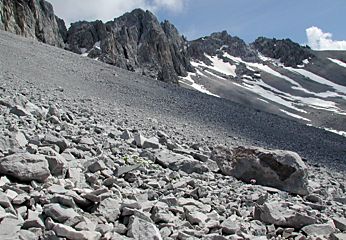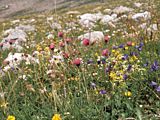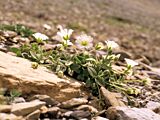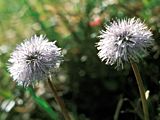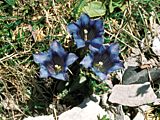The Alps - calcareous rock (Europe)
Rather than by region, we separate the illustrations for the Alps by geology - into calcareous and siliceous mountains. The height of the treeline varies between 1800 m (front ranges) to 2300 m (central ranges). Situated in the temperate zone the climate is very seasonal with the alpine winter lasting 8-10 months, depending on exposure and altitude. The calcareous flora tends to be richer in species and colours than the siliceous flora.
3 -
Dryas octopetala
(Rosaceae) forming sturdy mats on scree slopes, always indicating the presence of calcareous
influence.
4 -
Ranunculus alpestris
(Ranunculaceae), replacing
R. glacialis
whenever calcareous rock comes into play (here in the Hohe Tauern region, 2600 m).
6, 7 -
Globularia cordifolia
(left, Plantaginaceae) and
Draba aizoides
(right, Brassicaceae), two typical species from warm, S-exposed calcareous scree.
